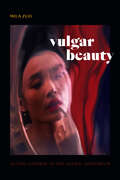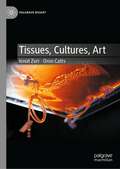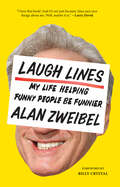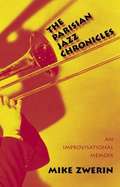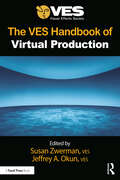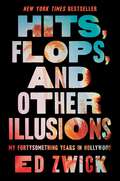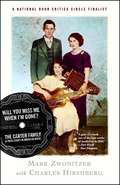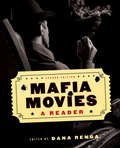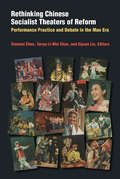- Table View
- List View
Vulgar Beauty: Acting Chinese in the Global Sensorium
by Mila ZuoIn Vulgar Beauty Mila Zuo offers a new theorization of cinematic feminine beauty by showing how mediated encounters with Chinese film and popular culture stars produce feelings of Chineseness. To illustrate this, Zuo uses the vulgar as an analytic to trace how racial, gendered, and cultural identity is imagined and produced through affect. She frames the vulgar as a characteristic that is experienced through the Chinese concept of weidao, or flavor, in which bitter, salty, pungent, sweet, and sour performances of beauty produce non-Western forms of sexualized and racialized femininity. Analyzing contemporary film and media ranging from actress Gong Li’s post-Mao movies of the late 1980s and 1990s to Joan Chen’s performance in Twin Peaks to Ali Wong’s stand-up comedy specials, Zuo shows how vulgar beauty disrupts Western and colonial notions of beauty. Vulgar beauty, then, becomes the taste of difference. By demonstrating how Chinese feminine beauty becomes a cinematic invention invested in forms of affective racialization, Zuo makes a critical reconsideration of aesthetic theory.
Tissues, Cultures, Art (Palgrave BioArt)
by Ionat Zurr Oron CattsTissues, Cultures, Art narrates the twenty-five years of collaborative and sometimes provocative artistic practice and scholarly thought of Catts & Zurr, who pioneered the use of regenerative biology techniques to create Semi-Living art using living cells, tissues, and technological surrogate bodies. Through hands-on work in biological laboratories, the authors researched concepts such as partial-life and DNA-Chauvinism and explored the fantasies of living in a technologically mediated victimless utopia. The authors delve into life’s resistance to reductionism, systemisation and control, asking whether there is something unique to life without the need to resort to metaphysics. Their practices reach beyond the confines of art and are often cited as precursors to the cellular agriculture and biofabrication industries. Through a hybrid of personal reflections, poetics, and anecdotes with a more rigorous, scholarly approach – all illustrated with artworks - the authors present a critical view on the use of life as a raw material for human manipulation.
Laugh Lines: My Life Helping Funny People Be Funnier
by Alan ZweibelWith his tender, funny memoir of four decades in the business, one of the first writers for Saturday Night Live traces the history of American comedy. Alan Zweibel started his comedy career selling jokes for seven dollars apiece to the last of the Borscht Belt standups. Then one night, despite bombing on stage, he caught the attention of Lorne Michaels and became one of the first writers at Saturday Night Live, where he penned classic material for Gilda Radner, John Belushi, and all of the original Not Ready For Prime Time Players. From SNL, he went on to have a hand in a series of landmark shows—from It’s Garry Shandling’s Show to Curb Your Enthusiasm. Throughout the pages of Laugh Lines Zweibel weaves together his own stories and interviews with his friends and contemporaries, including Richard Lewis, Eric Idle, Bob Saget, Mike Birbiglia, Sarah Silverman, Judd Apatow, Dave Barry, Carl Reiner, and more. The book also features a charming foreword from his friend of forty-five years Billy Crystal, with whom he co-wrote and co-produced the upcoming film Here Today that stars Crystal and Tiffany Haddish. Laugh Lines is a warmhearted cultural memoir of American comedy.“In Laugh Lines, Zweibel looks back, affectionately and informatively, at a career that began when he was a young deli worker grinding out jokes for old-school borscht belt comedians in his spare time, and that, after his “S.N.L.” years, included rewarding collaborations with, among others, Garry Shandling, Billy Crystal, Martin Short, Larry David and Dave Barry. . . . Fascinating.” —New York Times“Any comedy fan will thrill to see the contemporary art's invention through the eyes of consummate funny man Alan Zweibel. He takes you behind the velvet rope and makes you weep for all those artists who made us laugh. Screamingly funny—also very moving. A classic.” —Mary Karr“Alan Zweibel is legendary among us comedians. He is the man who delivers comedy with an emotional clout that makes him respected and revered.” —Steve Martin
The Parisian Jazz Chronicles: An Improvisational Memoir
by Mike ZwerinThis book is built around a structure that treats such subjects of my music column in the International Herald Tribune as Dexter Gordon, Freddy Heineken, Miles Davis, Bob Dylan, Chet Baker, and Melvin Van Peebles as though they were the written notes in big band arrangements.
The VES Handbook of Virtual Production
by Susan Zwerman Jeffrey A. Okun Susan Thurmond O’NealThe VES Handbook of Virtual Production is a comprehensive guide to everything about virtual production available today – from pre-production to digital character creation, building a stage, choosing LED panels, setting up Brain Bars, in-camera compositing of live action and CG elements, Virtual Art Departments, Virtual Previs and scouting, best practices and much more. Current and forward-looking, this book covers everything one may need to know to execute a successful virtual production project – including when it is best to use virtual production and when it is not. More than 80 industry leaders in all fields of virtual production share their knowledge, experiences, techniques, and best practices. The text also features charts, technical drawings, color images, and an extensive glossary of virtual production terms. The VES Handbook of Virtual Production is a vital resource for anyone wishing to gain essential knowledge in all aspects of virtual production. This is a must-have book for both aspiring and veteran professionals. It has been carefully compiled by the editors of The VES Handbook of Visual Effects.
The VES Handbook of Virtual Production
by Susan Zwerman Jeffrey A. Okun Susan Thurmond O’NealOur handbook on Virtual Production is written in conjunction with the Visual Effects Society, guaranteeing the most expert advice in all areas of Virtual Production. It is a first of its kind handbook on this nascent technology, pooling insights from a vast array of different practitioners, to create a truly comprehensive reference book. It covers not only the software, hardware, and workflows, but also the types of jobs training needed for VP – the book starts from the ground up and provides an overview of what you need to learn before you use this technology.
Hits, Flops, and Other Illusions: My Fortysomething Years in Hollywood
by Ed ZwickThis heartfelt and wry career memoir from the director of Blood Diamond, The Last Samurai, Legends of the Fall, About Last Night, and Glory, creator of the show thirtysomething, and executive producer of My So-Called Life, gives a dishy, behind-the-scenes look at working with some of the biggest names in Hollywood.&“I&’ll be dropping a few names,&” Ed Zwick confesses in the introduction to his book. &“Over the years I have worked with self-proclaimed masters-of-the-universe, unheralded geniuses, hacks, sociopaths, savants, and saints.&” He has encountered these Hollywood types during four decades of directing, producing, and writing projects that have collectively received eighteen Academy Award nominations (seven wins) and sixty-seven Emmy nominations (twenty-two wins). Though there are many factors behind such success, including luck and the contributions of his creative partner Marshall Herskovitz, he&’s known to have a special talent for bringing out the best in the people he&’s worked with, especially the actors. In those intense collaborations, he&’s sought to discover the small pieces of connective tissue, vulnerability, and fellowship that can help an actor realize their character in full. Talents whom he spotted early include Brad Pitt, Matt Damon, Denzel Washington, Claire Danes, and Jared Leto. Established stars he worked closely with include Leonardo DiCaprio, Anthony Hopkins, Tom Cruise, Julia Roberts, Anne Hathaway, Daniel Craig, Jake Gyllenhaal, Bruce Willis, Demi Moore, and Jennifer Connelly. He also sued Harvey Weinstein over the production of Shakespeare in Love—and won. He shares personal stories about all these people, and more. Written mostly with love, sometimes with rue, this memoir is also a meditation on working, sprinkled throughout with tips for anyone who has ever imagined writing, directing, or producing for the screen. Fans with an appreciation for the beautiful mysteries—as well as the unsightly, often comic truths—of crafting film and television won&’t want to miss it.
Will You Miss Me When I'm Gone?
by Mark Zwonitzer Charles HirshbergWill You Miss Me When I'm Gone? is the first major biography of the Carter Family, the musical pioneers who almost single-handedly established the sounds and traditions that grew into modern folk, country, and bluegrass music -- a style celebrated in O Brother, Where Art Thou?A.P. Carter was a restless man, seemingly in a constant state of motion. On one of his travels across the sparsely settled mountains and valleys that surrounded his home in southern Virginia, he met and married a young girl named Sara Dougherty. Orphaned as a child, Sara was remote by nature but seemed to find release in singing the typically melancholy ballads that were a part of her home tradition.For fun, A.P., Sara, and her cousin Maybelle (who married A.P.'s brother "Eck" Carter) would play and sing the hymns and ballads known in their Poor Valley community, occasionally adding songs A.P. had collected during his travels. Then, in 1927, they traveled to Bristol, Tennessee, to audition for a New York record executive who was hunting "hillbilly" talent and offering an amazing fifty dollars per song for any he recorded. These Bristol recording sessions would become generally accepted as the "Big Bang" of country music, producing two of its first stars: Jimmie Rodgers and the Carter Family.By the early 1930s, the Carter Family was the most bankable country music group in America, with total sales of more than a million records. By the late '30s, they were appearing regularly on high-power radio station XERA, which broadcast from coast to coast. A whole generation of country people could gather around the radio and hear the sound of music that came straight from their world. Johnny Cash in Arkansas, Waylon Jennings in Texas, Chet Atkins in Georgia, and Tom T. Hall in Kentucky all listened to the Carter Family. It was their formal schooling, Country Music 101.Inside the Carter Family, however, things were hardly perfect. Though nobody outside the family knew it, Sara had left her difficult and quixotic husband in 1933. In 1936 she won a divorce. Even throughout the long and painful breakup, the Carters kept performing together, singing an ever-widening range of new songs they wrote or old songs they remade: songs of love, of betrayal, and of the death of fondest hopes. And they kept at it even after Sara married A.P.'s cousin Coy Bays in 1939. After fulfilling a final radio contract in 1943, Sara and Coy moved to California to settle near his family. The original Carter Family never performed or recorded together again.With Sara gone, A.P. retreated home, opened a general store, and lived out the next two decades in obscurity, the odd man out in a new and reconfigured Carter musical clan. Meanwhile, Maybelle and her daughters (Helen, June, and Anita) went out and got themselves new radio contracts, working in Richmond, Virginia; Knoxville, Tennessee; and Springfield, Missouri, before ascending to country music's ultimate stage, Nashville's Grand Ole Opry. Nearly fifty years in the business won Maybelle the title "Mother of Country Music" and the adoration of generations of guitar players and just plain listeners.The story of the Carter Family is a bittersweet saga of love and fulfillment, sadness and loss. Will You Miss Me When I'm Gone? is more than just a biography of a family; it is also a journey into another time, almost another world. But their story resonates today and lives on in the timeless music they created.
Will You Miss Me When I'm Gone: The Carter Family and their Legacy in American Music
by Mark Zwonitzer Charles HirshbergMafia Movies: A Reader, Second Edition (Toronto Italian Studies)
The mafia has always fascinated filmmakers and television producers. Al Capone, Salvatore Giuliano, Lucky Luciano, Ciro Di Marzio, Roberto Saviano, Don Vito and Michael Corleone, and Tony Soprano are some of the historical and fictional figures that contribute to the myth of the Italian and Italian-American mafias perpetuated onscreen. This collection looks at mafia movies and television over time and across cultures, from the early classics to the Godfather trilogy and contemporary Italian films and television series. The only comprehensive collection of its type, Mafia Movies treats over fifty films and TV shows created since 1906, while introducing Italian and Italian-American mafia history and culture. The second edition includes new original essays on essential films and TV shows that have emerged since the publication of the first edition, such as Boardwalk Empire and Mob Wives, as well as a new roundtable section on Italy’s “other” mafias in film and television, written as a collaborative essay by more than ten scholars. The edition also introduces a new section called “Double Takes” that elaborates on some of the most popular mafia films and TV shows (e.g. The Godfather and The Sopranos) organized around themes such as adaptation, gender and politics, urban spaces, and performance and stardom.
Rethinking Chinese Socialist Theaters of Reform: Performance Practice and Debate in the Mao Era
The profound political, economic, and social changes in China in the second half of the twentieth century have produced a wealth of scholarship; less studied however is how cultural events, and theater reforms in particular, contributed to the dynamic landscape of contemporary Chinese society. Rethinking Chinese Socialist Theaters of Reform fills this gap by investigating the theories and practice of socialist theater and their effects on a diverse range of genres, including Western-style spoken drama, Chinese folk opera, dance drama, Shanghai opera, Beijing opera, and rural theater. Focusing on the 1950s and ’60s, when theater art occupied a prominent political and cultural role in Maoist China, this book examines the efforts to remake theater in a socialist image. It explores the unique dynamics between official discourse, local politics, performance practice, and audience reception that emerged under the pressures of highly politicized cultural reform as well as the off-stage, lived impact of rapid policy change on individuals and troupes obscured by the public record. This multidisciplinary collection by leading scholars covers a wide range of perspectives, geographical locations, specific research methods, genres of performance, and individual knowledge and experience. The richly diverse approach leads readers through a nuanced and complex cultural landscape as it contributes significantly to our understanding of a crucial period in the development of modern Chinese theater and performance.
Teaching Comedy (Options for Teaching)
From Shakespeare to The Simpsons, comedy has long provided both entertainment and social commentary. It may critique cultural values, undermine authority, satirize sacred beliefs, and make room for the marginalized to approach the center. Comedy can be challenging to teach, but in the classroom it can help students connect with one another, develop critical thinking skills, and engage with important issues.The essays in this volume address a rich variety of texts spanning film, television, stand-up, cartoons, and memes as well as conventional literary works from different places and times. Contributors offer theoretical foundations and practical methods for a broad range of courses, including guidance on contextualizing the humor of historical works and on navigating the ways that comedy can both subvert and reinforce stereotypes. Finally, the volume argues for the value of comedy in difficult times, as a way to create community and meaning.This volume contains discussion of fiction, poetry, plays, and essays by Maya Angelou, Jane Austen, Aphra Behn, Hugh Henry Brackenridge, Frances Burney, Charles W. Chesnutt, Roddy Doyle, Maria Edgeworth, Ben Jonson, Anita Loos, Emtithal Mahmoud, Thomas Middleton, Okot p'Bitek, William Shakespeare, Laurence Sterne, Jonathan Swift, Alma Villanueva, Paula Vogel, Oscar Wilde, John Wilmot, and William Wycherley; TV shows and films including Crazy Ex-Girlfriend, The Gold Rush, Life Is Beautiful, The Marvelous Mrs. Maisel, The Office, Office Space, Rick and Morty, and South Park; works and stand-up performances by Aziz Ansari, Samantha Bee, Dave Chappelle, Louis C.K., Tina Fey, Moms Mabley, Hasan Minhaj, Eddie Murphy, Trevor Noah, Richard Pryor, Issa Rae, and Wanda Sykes; and visual works and other media including Aaron McGruder's The Boondocks, Bill Watterson's Calvin and Hobbes, Nick Sousanis's Unflattening, Marvel's Hawkeye, The Onion, YouTube videos, advertisements, and memes.
